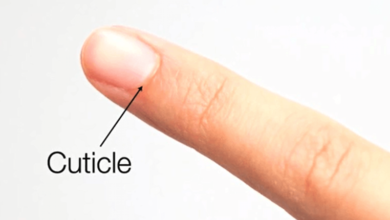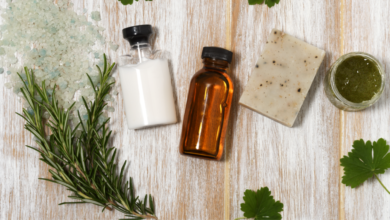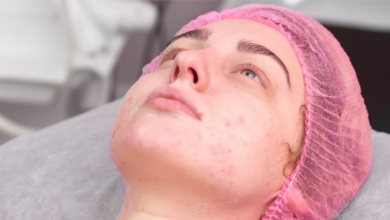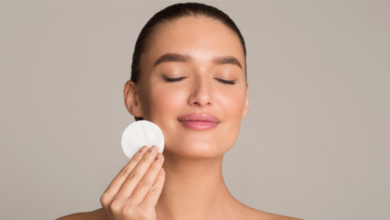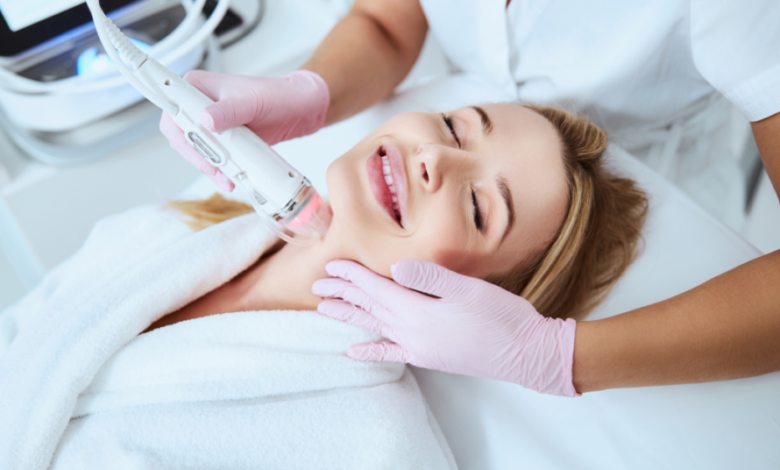
Today our topic is microneedling for acne scars. Are you one of those who think active acne is one of the worst dermatological conditions you could probably go through? Believe me; atrophic scarring is the worst of all of them. It usually develops below the upper layer of skin that further prevents the skin from regenerating healthy tissues leaving your skin with boxcar scars.
If you have stumbled across treatments, then you have most likely looked into microneedling for acne scars. You may have probably seen the “before and after” pictures of the people that undergo microneedling for acne scars wondering if it really helps or not.
Well, let’s dive into the “ins and outs” of how you can use microneedling for acne scars to a maximum effect.
How Does Microneedling Work?
A small device comprising of several small needles is used to penetrate into the top layer of the skin. It removes the top layer allowing the production of collagen and regeneration of cells to reveal picture-perfect skin.
Collagen is one of the essential proteins that act as the main building block for the skin, and that’s what keeps the skin firm, youthful, elastic, and smooth.
Skin loses collagen due to a number of reasons, including aging that further contributes to wrinkles and skin injuries commonly referred to as scarring, stretch marks, and other scars.
Microneedling may help in dealing with wrinkles, aging, scarring, and stretch marks.
It’s important to keep in mind that microneedling is a long-term solution – it isn’t a quick process. It may take several months for an individual to see the desirable results.
Benefits and Risks of Microneedling
Although microneedling keeps the scarring at bay, “Every Rose Has Thorn” comes with both perks and risks.
Benefits:
According to the systematic review study (2018), microneedling is one of the effective and safest options that doesn’t just rejuvenate your skin but address wrinkles and scarring.
Nonetheless, the researchers recognized that more research is needed to determine whether microneedling is a viable therapy option in all circumstances.
Moreover, a press release by the American Academy of Dermatology stated that people undergoing microneedling would likely expect a reduction in skin conditions, including wrinkles, scarring, large pores, and fine lines.
Risks:
Skin irritation is one of the prime risks you are likely to encounter after the treatment. Moreover, it has some side effects, including:
- Bruises.
- Redness.
- Flaky Skin.
- Dryness.
Bleeding is a rarity though it could occur if you are going through a deeper procedure. Usually, people taking medications of blood-thinning are at high risk of bleeding. You should always inform your doctor or aesthetician before opting for treatment.
There is a possibility of some more serious effects that include:
- Pigmentation.
- Infection.
- Sensitivity to Topical Medications.
You are probably not a suitable prospect for microneedling treatment if you have:
- Active Acne.
- Unstable type of skin.
- Active skin infection.
- Keloid Scars.
Taking help from a professional aesthetician or dermatologist who can handle these skin conditions will help in minimizing the risks associated with microneedling for acne scars.
Can You Do Microneedling for Acne Scars at Home?
Yes, totally, you can do microneedling for acne scars at home, but you got to be cautious while doing it because it involves needles. Safety should be your prime concern.
Following are the essentials of a microneedling home-kit:
- Roller.
- 70% Isopropyl Alcohol.
- Cleanser.
- Cream to numb your skin (it’s optional).
- Serum.
Here is how to do it in five easy steps:
1. Disinfecting Roller
To begin with, you should always start with disinfecting the derma roller limiting the risks of the infection. You can disinfect using 70% isopropyl alcohol and allowing it to soak for at least 5 to 10 minutes.
2. Cleaning Your Face
Always clean your skin using a cleanser of balanced pH, and then cleanse again. Before you begin rolling your skin, lightly wipe the 70% isopropyl alcohol directly onto your skin.
Tip:
Here you can apply any numb cream after cleaning the face if you are sensitive to pain. You will most likely apply one if you intend to use long needles for an advanced procedure. The treatment could be a little uncomfortable, depending upon the depth of the needles. You should apply the cream at least 30 minutes before the treatment.
3. Roll On Your Skin
You should strictly avoid the eye area and divide your face into 4 sections in mind before rolling.
- Lower Right.
- Upper Right.
- Lower Left.
- Upper left.
Start with light moves, rolling over one region 2-3 times in one direction (horizontally or vertically), making sure to lift the roller with each roll.
If you start vertically, now that you are done rolling one region 2-3 times, slightly shift the roller and continue until the entire section is covered. Return to that section and repeat the same process in a horizontal motion using a cross-hatch pattern.
4. Wash Your Face
Once you are done rolling your face, clean it with water and dry pat it using a clean pad.
5. Sanitizing the Roller
First thing first, right after the treatment, wash the roller with dishwasher soap. Before putting it back in the case, you should soak the derma roller again in 70% isopropyl alcohol for at least 10 minutes.
Consider replacing your derma roller after 10-15 uses. You might be needing a new one now and then if you intend to do the procedure for several days a week.
Best Serums to Apply after Microneedling
One of the most touted perks of microneedling is its potential to help moisturizers and serum in skin penetrability and becoming more effective.
You need to very careful while choosing serums/skin ingredients because they can either make or break your skin. Skin penetrability is good when you are applying healthy ingredients.
Following are the beneficial ingredients for your skin:
Peptides: Naturally occurring compounds in the skin known as copper peptides help in increasing collagen production when given topically.
Vitamin C: In the skincare process, vitamin c is considered as a legendary skincare ingredient because it helps in the production of collagen. Also, it is very effective in brightening the skin. But, one should be cautious while applying because it may cause a foreign body reaction due to its chemical.
Proteins: Proteins help in the growth of both cells and tissues. They help in binding the skin cells and send out a signal to heal and regenerate new skin cells. They work in tandem with thickening skin when it comes to microneedling.
Hyaluronic Acid: It replenishes the skin moisture along with plumping and hydrating the skin after the procedure.
Benefits of Microneedling at Home
Well, the biggest benefit of microneedling for acne scars at home comes down to cost-effectiveness. Usually, it costs around $200-$700, which isn’t in the reach of many people, especially when you need follow-up sessions. Thus, doing it at home is way cheaper than professional treatments though time taking.
On the contrary, you can easily get the derma roller for $20 online that does the job perfectly. Though, home procedures would rarely match with that of professional ones. But, it still enhances exfoliation and absorption of the product. Most importantly, strictly adhering to home procedures, you will surely see results in six months.
Following are the potential benefits of professional microneedling procedures:
- Reduces stretch marks and wrinkles.
- Improvement in discoloration and acne scars.
- Enhanced product absorption.
- Rejuvenation of the skin’s complexion and texture.
Take Away
Acne scars won’t go on their own, and the effects of the topical medications wear out once you stop using them. Hence, microneedling for acne scars is emerging as the safest and effective method to reduce scarring. It doesn’t just help in scarring but rejuvenates the skin, clearing fine lines and wrinkles.
Disclaimer:
Any information provided on this article or our website is for entertainment purposes only and researched from the internet. Please consult your local professional or physician before using any information provided.
